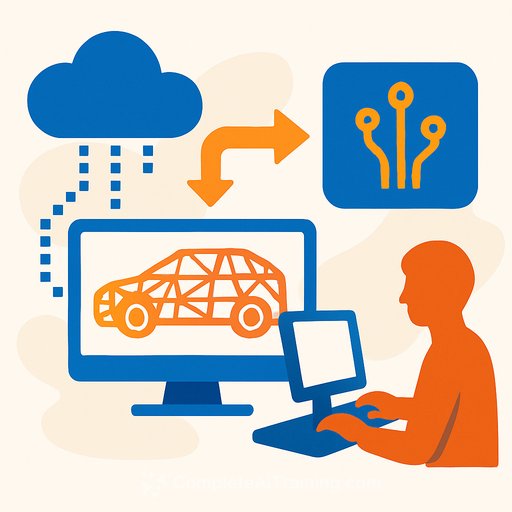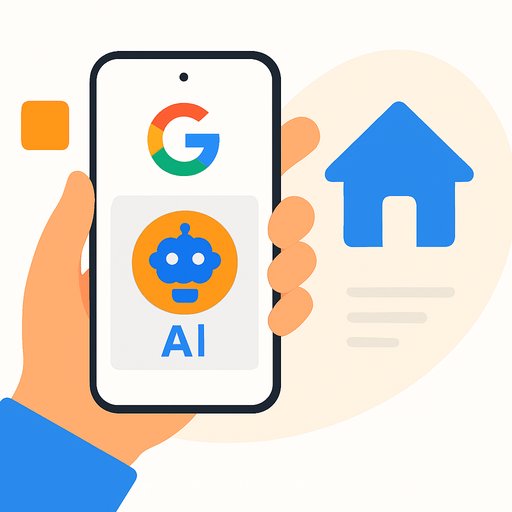How AI, cloud, and the digital thread are redefining manufacturing design
Product development is changing fast. AI, cloud platforms and digital thread practices are moving teams from one-off experiments to scalable, connected engineering. The result: earlier validation, fewer late-stage surprises, and tighter collaboration across design, engineering and operations.
According to John Chien, director of industry and product marketing at Microsoft, simulation-led design and shift-left engineering are now mainstream. Engineering environments are becoming more collaborative and data-driven, with clear gains in speed, cost and quality.
Shift-left: solve issues earlier, ship stronger products
Shift-left practices pull validation forward into design. Teams catch compliance and performance issues early, cutting rework and accelerating launch timelines. This approach also strengthens cross-functional collaboration and supports stricter regulatory needs in sectors like aerospace and automotive.
The blockers are familiar: siloed simulation models, gaps in the digital thread, and weak integration across CAD, CAE and PLM. Cloud-native platforms and open APIs are closing these gaps.
Cloud as the engineering backbone
Hexagon rebuilt its SDx platform on Microsoft Azure, automating engineering workflows and reducing facility onboarding time by more than 90 percent while saving millions through productivity and data-processing gains. Engineers get faster access to PLM tools with less IT overhead, while organisations gain centralised governance, security and scalability.
PTC's transition of Windchill and Creo to Azure demonstrates the same effect: improved performance and real-time collaboration across global teams. High-performance computing on cloud unlocks more simulation iterations and better design optimisation without new on-prem hardware.
AI in the loop: copilots, faster reviews, smarter robots
AI is removing friction across core engineering tasks. Volkswagen uses Microsoft Copilot to streamline requirements reviews, cutting review time by 50 percent. Woven by Toyota leverages Azure OpenAI to build copilots that help developers design, simulate and deploy autonomous driving capabilities faster and more safely.
Connector manufacturer Harting uses Azure AI to speed component selection for faster iteration. KUKA embeds Azure AI Foundry models so non-programmers can instruct robots with natural language, reducing integration time and opening advanced automation to a wider set of users.
Where cloud PLM meets AI
The big unlock comes from combining cloud PLM with AI in a unified environment. With a single data foundation, AI can auto-generate documentation, draft requirements and simulate product behaviour in context. Siemens embeds Azure OpenAI into Teamcenter, enabling natural-language interactions that simplify updates and accelerate workflows.
Continental applies Azure AI to autonomous systems for rapid simulation, intelligent control and fleet optimisation. Rolls-Royce unified engineering and operational data on Azure to enable predictive maintenance across its aerospace fleet, reducing downtime and cutting costs.
Proven business value
"For organisations adopting shift-left, cloud PLM and AI, the ROI is compelling," says Chien. Hexagon's Azure move is a strong proof point. Forrester's Total Economic Impact findings on Teamcenter X also show reduced operational costs and faster implementations for cloud PLM customers.
Security and compliance by design
Security and IP protection remain non-negotiable. Azure provides enterprise-grade encryption, identity management and compliance certifications, now embedded by partners like Siemens and Autodesk. Microsoft also offers proactive tools for AI security and regulatory readiness, helping teams address risks such as prompt injection attacks.
What product development leaders should do next
- Adopt shift-left workflows: bring simulation, verification and compliance into early design to cut rework.
- Consolidate the digital thread: integrate CAD, CAE and PLM on a cloud foundation with open APIs.
- Fund AI copilots where engineers spend time: requirements reviews, change requests, simulation setup and documentation.
- Prioritise HPC-backed simulation: increase iteration counts to improve design quality without hardware bottlenecks.
- Set governance early: enforce data access, model lineage, and AI usage policies within your PLM and DevOps toolchain.
- Measure outcomes: track lead time, ECO cycle time, simulation coverage, right-first-time rates and defect escape.
Partner perspective: AVEVA
"AVEVA software transforms manufacturing's greatest challenges into competitive advantages," says Sree Hameed, consumer products industry strategist at AVEVA. Built on Microsoft's cloud initiatives, AVEVA integrates IT and OT systems so teams gain instant operational insights through edge-to-cloud data and contextual AI.
Polymer manufacturer Covestro uses AVEVA solutions to simulate the production of green compounds from concept to trial, confirming product viability, enabling cost-effective testing and saving engineering effort by reducing errors.
Bottom line
AI, cloud and the digital thread are changing how products are designed and delivered. Teams that move early see faster cycles, lower costs and fewer surprises. The path is clear: unify data, scale simulation, and embed AI where it removes friction.
If you're upskilling product teams on AI copilots, PLM and data workflows, explore Complete AI Training: courses by job for practical, role-specific learning.
Your membership also unlocks:






